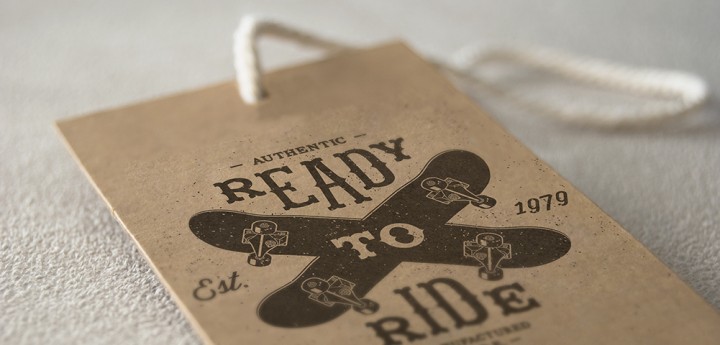If you need to print products for your company, you may be considering which paper will give your customers the message you desire.
What is a coated paper? What is uncoated paper? What is the real difference and how will it change how people think of your business?

Coated vs Uncoated Paper
Coated paper stops ink from soaking into the paper, giving the whole thing a sharper look and feel which makes a design really pop off the page. When the ink soaks into uncoated paper, however, it adds a much warmer quality. This can make a big difference to your design.
The Difference
Coated paper is paper which has been coated by a compound or polymer to yield certain qualities to the paper, often these will involve a surface gloss, smoothness and reduced ink absorbency. These will give you a smooth, uniform finished product with a sleek, professional shine and the reduced ink absorbency will help bring out the vibrancy of your artwork. An uncoated paper will be an absorbent paper stock, this is somewhat of a more traditional finish which will allow the ink to bleed into the paper giving rich full colours, these papers often have a textured finish due to their porous nature and give a great vintage feel.
Which Is Right For You?
Coated paper will help give you a fresh, contemporary feel – The low ink absorbency will help bring out the vivdity of your artwork, this will lead to sharper images and perfect for bringing you and your company into the modern world.
Uncoated paper will give you a more traditional feel which is increasingly popular at the moment with a fresh, crisp, vintage feel to your product with rich images and and a more raw paper feel.
Uses?
Coated Gloss papers are used more commonly for leaflets, flyers and posters for events, commonly used as gig and club advertising, take away menus and anything wishing to show off your photography skills!
Coated Silk papers are also used commonly for leaflets and flyers. These are used more often for businesses and give a more subtle, sophisticated feel. These are perfect to show of photography and give a smooth feeling of high quality and distinction.
Uncoated Pulp and bond papers are used more often in formal situations, you will find letterheads and compliment slips often printed on Bond (Uncoated or Offset) paper although with the rise in vintage events and retro sentiments these are becoming more mainstream for music, arts and fashion advertising.

The Environment
Whichever paper stock you decide to use, you will be be able to rest assured that if they are printed with Solopress you will be making the right choice for the environment.
There are no cost effective 100% recycled coated papers available on the market at this time. However, the coated gloss and silk paper we use and endorse have a recycled paper content of 55%. We use 100% Recycled Paper for our offset and 55% silk for our coated range of flyers, business cards, leaflets and posters.
We have not just adapted this ink technology to our business cards and flyers, we are producing all of our printed products using these inks. Solopress print with eco inks only. These inks use vegetable oil instead of mineral oil. Such inks have been available for some time, but now the inks have been developed so well it doesn’t compromise the quality of your work.

Did You Know?
- If you produce a leaflet on a heavier paper stock, people are less likely to discard it without reading it.
- A print piece is a physical thing which is hard to ignore. Magazines and newspapers can stay in houses or offices for months or years. Internet ads can disappear into cyber space within seconds.
- Print engages the audience more than digital advertising. People read digital text 20-30% slower than physical text and are less engaged.
- Print is great for solidifying your brand identity. Your products should have a consistent aesthetic in terms of fonts, colours, types of images and paper stock to establish brand recognition.





